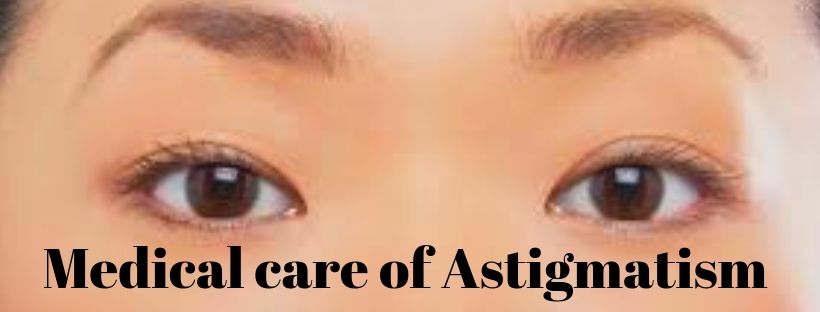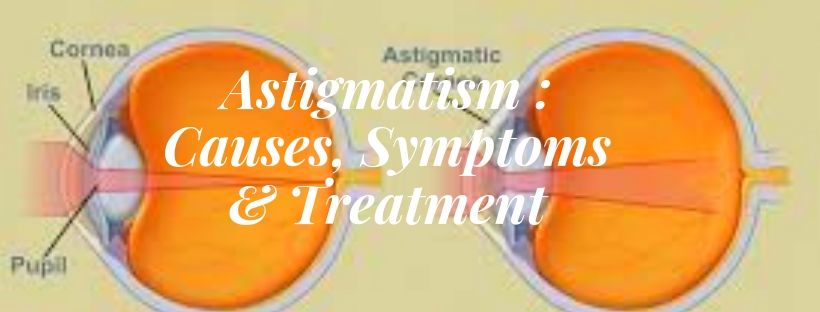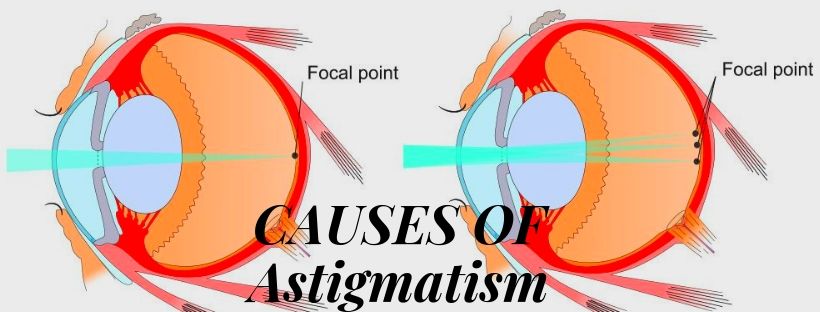Astigmatism is a heavy word, but it only means your eye isn’t perfectly round. Almost all of us have it to some degree.
A healthy eyeball is shaped like a round ball. Light gets into it and bends equally, which gives you a clear outlook. But if your eye is shaped more like a football or the back of a spoon, the light gets bent more in one direction than another. That means only a portion of an object is in the center. Things at a distance may look blurry and rough. It’s moderately easy for an eye doctor to fix with glasses, contacts, or surgery.
Astigmatism (uh-STIG-muh-tiz-um) is a simple and generally treatable defect in the shape of your eye that causes blurred distance and near vision.
Astigmatism happens when either the front surface of your eye (cornea) or the lens, inside your eye, has inconsistent curves. Instead of having one curve similar to a round ball, the surface is egg-shaped. This creates a blurred vision at all distances.
Astigmatism is usually present at birth and may occur in combination with nearsightedness or farsightedness.
Contents
Types of astigmatism
The two types of astigmatism are corneal and lenticular. Corneal astigmatism occurs when your cornea is deformed. Lenticular astigmatism occurs when your lens is deformed.
Causes of astigmatism
It’s natural and most people are born with it. We don’t know the exact cause. It may occur after an eye injury, eye disease, or surgery. There’s a myth that you can get it if you read in moderate light or sit too near to the TV, but that isn’t right.
Symptoms of astigmatism
The symptoms of astigmatism may vary in every person. Some people don’t have any symptoms. The symptoms of astigmatism comprise:
- Blurry, distorted, or fuzzy vision at all distances
- Difficulty seeing at night
- Eyestrain
- Squinting
- Eye irritation
- Headaches
Consult a doctor if you have symptoms of astigmatism.
Diagnosis of astigmatism
An optometrist or ophthalmologist diagnoses astigmatism by a comprehensive eye test. An optometrist is a doctor who diagnoses vision problems and eye diseases. An ophthalmologist is a doctor who provides medical and surgical treatment of vision problems and eye diseases. There are various tests optometrists and ophthalmologists may use during your eye checkups to diagnose astigmatism.
Visual acuity assessment test
During a visual acuity assessment test, your doctor will ask you to read letters from a chart at a particular distance to ascertain how well you can see the letters.
Refraction test
A refraction test uses an instrument called an optical refractor. The machine has many corrective glass lenses of different strengths. Your doctor will ask you to read a chart while watching through lenses that are different strengths on the optical refractor. They’ll eventually find a lens that properly corrects your vision.
Keratometry
Keratometry is a way for your doctor to measure the shape of your cornea. They will do this by watching at your eye through a keratometer.
Treatment of Astigmatism
Almost all situations can be improved with glasses or contacts. But only if you have small astigmatism — your doctor may refer to it as a point — and you don’t have a different vision problem, you may not need them.
Irregular astigmatism is notably less popular and is associated with problems with your cornea, the front part of the eye. A common one is a keratoconus, in which your normally round cornea becomes cone-shaped.
Treatments for the common levels of astigmatism:

Who is at risk for astigmatism?
Astigmatism can happen in children and adults. Risk of catching astigmatism may be higher if you have any of the following:
- A family history of astigmatism or other eye disorders, such as keratoconus (degeneration of the cornea).
- Scarring or thinning of your cornea.
- Excessive nearsightedness, which generates blurry vision at a range.
- Excessive farsightedness creates a blurry close-up vision.
- History of specific types of eye surgery, such as cataract surgery.
Conclusion
Corrective lenses or surgery can normally restore your vision to normal. There’s no known way to prevent astigmatism from developing.
Visit an ophthalmologist immediately if you experience any such symptoms or problems.
If you are looking for a good
Visit an ophthalmologist immediately if you experience any such symptoms or problems.
If you are looking for a good eye hospital in Delhi. If your looking for any surgery related to eyes do visit our website Eyemantra. We offer various services like Cataract Surgery, Retina Surgery, Cataract Surgery, Specs Removal, and many more.
Call +91-8851044355 now to book an appointment. Or email at eyemantra1@gmail.com.
You may also like:
Do’s and Dont’s for protecting your eyes while playing holi
Phaco Surgery | Types – Regular or Micro | IOLs & Equipments |
Convergence Exercises: Symptoms of Insufficiency & Treatment

